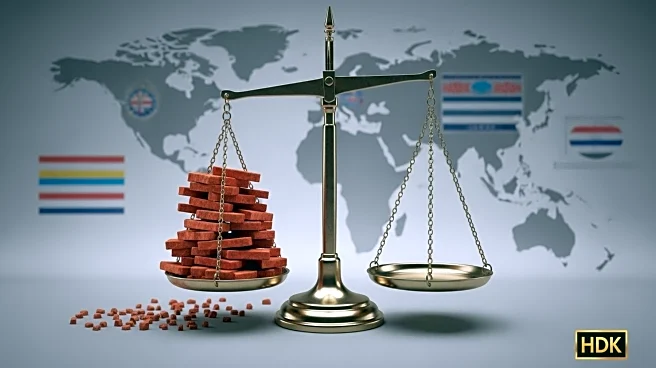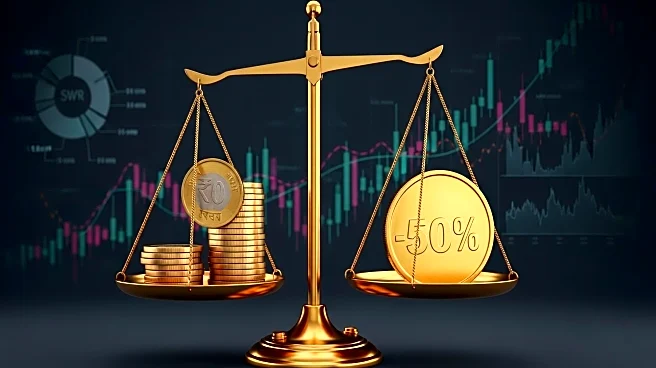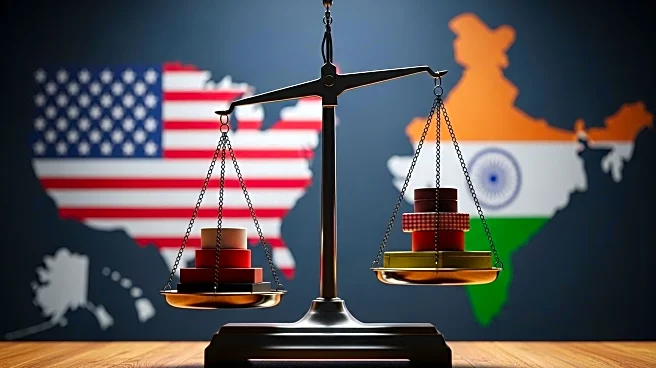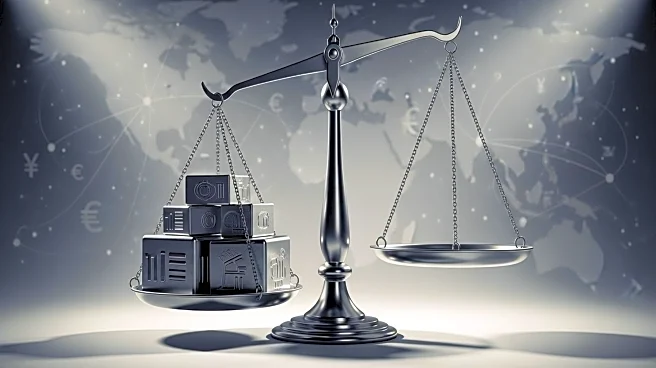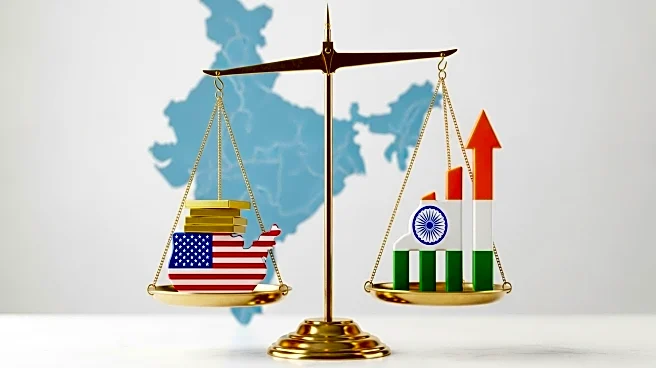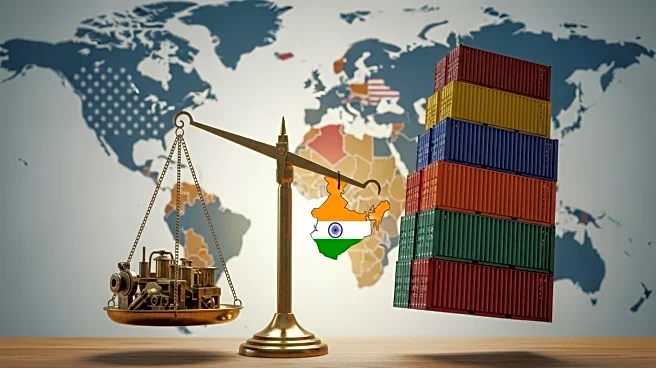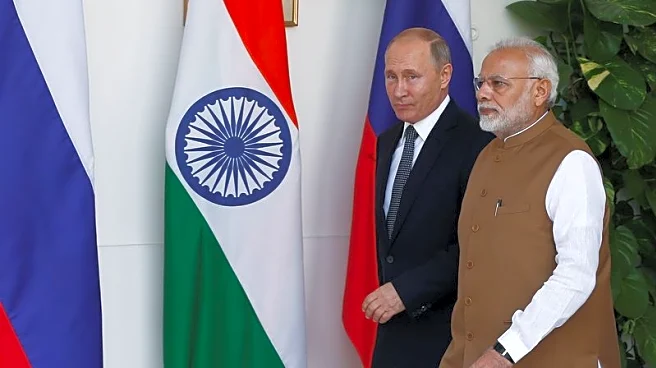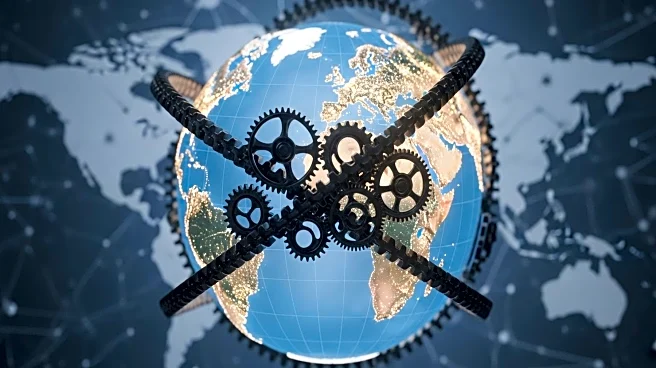What's Happening?
President Trump has implemented a 50% tariff on a wide range of Indian goods, effective immediately. This decision follows an earlier 25% tariff imposed on July 30, which was doubled due to India's continued purchase of Russian oil. The tariffs target sectors such as textiles, gems, jewelry, footwear, and furniture, potentially affecting billions of dollars in trade and risking thousands of jobs in India. The move is expected to challenge India's export competitiveness, particularly against China, and could undermine Prime Minister Narendra Modi's economic ambitions to transform India into a major manufacturing hub.
Why It's Important?
The tariffs represent one of the highest rates imposed by the U.S., significantly impacting U.S.-India relations and bilateral trade, which was valued at $212 billion annually. The affected sectors are labor-intensive and include small companies that may struggle to survive the economic hit, potentially losing business to other countries like Vietnam and Bangladesh. While the Indian pharmaceutical industry is exempt due to its role in providing affordable healthcare in the U.S., other industries face severe challenges. The tariffs could lead to a reevaluation of India's reliance on the U.S. market and prompt exploration of new trade partnerships.
What's Next?
India is expected to take measures to mitigate the impact of the tariffs, including financial assistance for exporters and efforts to diversify into new markets. Prime Minister Modi has pledged to protect farmers and push for self-reliance, with potential tax cuts and subsidies to support affected industries. The Indian government may also consider joining multilateral trade pacts and strengthening ties with other countries, including China and Russia, to offset the economic impact. The situation could lead to a shift in India's trade strategy and a reassessment of its geopolitical alliances.
Beyond the Headlines
The tariffs could have broader implications for global trade dynamics, as India may seek to balance its relationships with major economic powers. The move by President Trump highlights ongoing geopolitical tensions and the complexities of international trade policies. India's response to the tariffs may influence its future economic strategies and its role in the global market. The situation underscores the challenges faced by countries navigating trade disputes and the importance of strategic economic planning.
